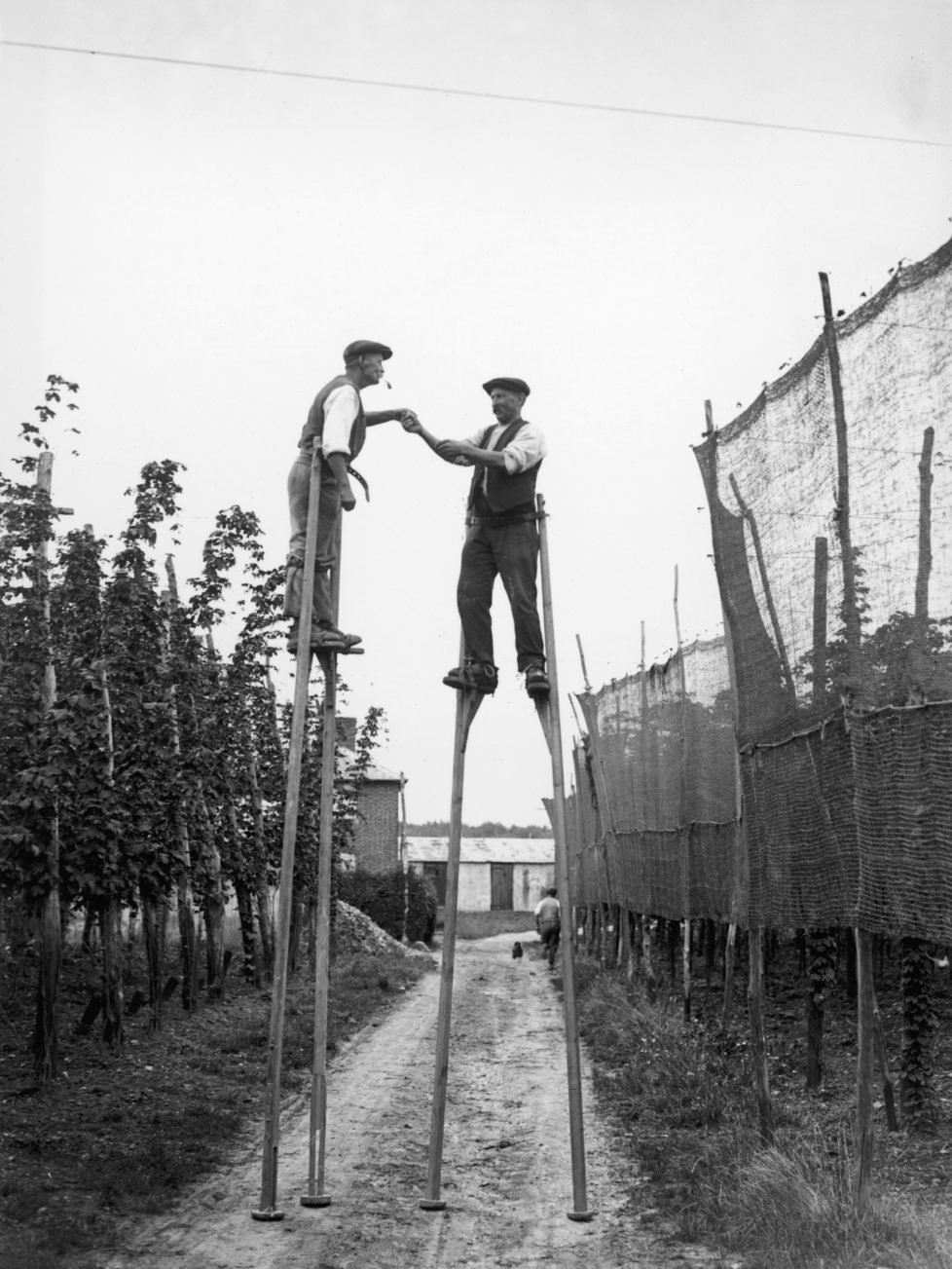Heritage Hops
Henri Reuchlin interviewed Carel from Hollands Hophuis for Dutch Brouw! Magazine about our Heritage Hops. This is the translated version.
Carel Krol is obsessed with hops, and especially European hops. That is why he and his Hollands Hophuis team focus only on hops from our continent. "Don't forget that Europe is the cradle of hopped beer," he says. "Sometimes we get carried away by all those modern hop varieties, while there is still so much to discover in Europe itself. It's packed with forgotten gems."
By Henri Reuchlin - translated by Nathan Hak - Hollands Hophuis.
That is why Hollands Hophuis is launching Heritage Hops this year. These are hop varieties that were once used in beer, but are nowadays no longer grown. "We want to bring those varieties back because they can really add something to a beer. We have discovered that many old hop farms still have old forgotten varieties growing in a corner of the garden. Often father or grandfather has kept them for nostalgia's sake or perhaps to do something with them one day. Those orphaned hop plants caught our attention", Carel says. The old varieties have been pushed aside by new varieties with a higher yield or more disease-resistant ones. "An example is the Groene Bel from Belgium. It had a yield of about 850 kg per hectare. When the Abbot of Affligem brought Hallertauer from his homeland, it turned out to have a yield that was about half more. The choice for the grower is then simple: Groene Bel out and Hallertauer in." But in the meantime, much more attention has been paid to the aroma of different hop varieties.
(Text continues below image)
Database
"We are looking all over Europe for those old varieties. We sit down at the table and discuss with the father and grandfather of our current growers how they used to do it. You then hear the most wonderful stories. We were at a hop grower's in Poland, for instance. The country was ravaged in a terrible way during the Second World War. To protect their green gold from the scorched earth tactics, hop growers planted a few seedlings in the forest in the hope that they would survive and that they could be retrieved when times get better. In this way, a kind of database of old hop varieties has emerged in a special way. The oldest generation still knows where the plants are and what variety it concerns. These are varieties that suit the soil and climate of the region."
Hollands Hophuis encourages growers to rebuild those old varieties, guaranteeing the sale of the hops. "Mind you, this remains a side project for the growers. It only works with professional hop idiots, because it is not really economic, but also part of the culture. But these professional hop idiots are the growers we like to work with. It is exciting: which varieties are successful and which are not? The agricultural knowledge has now increased to such an extent that it is also possible to rebuild old varieties in a healthy way."
(Text continues below image)
Netherlands
There are no real Dutch hop varieties (yet). "Dutch growers have traditionally been less concerned about quality how we see it. They were mainly driven by the yield. To increase yield, they cut the hops with leaves and stems, or worse still with stones, to increase the weight per hop bale. The quality of the hops was accordingly poor and hop growing in the Netherlands died out, even before thinking about different hop varieties began," says Carel. Hop cultivation was concentrated in well-known areas in England, Belgium, Germany and the Czech Republic, but also in Poland, Serbia and Austria, for example.
"With our heritage hop project, we want to enrich the beer story. After all, you can't talk about beer without thinking about the raw materials. We work together with passionate brewers who like to connect with this story. These are brewers who think critically about the quality of their hops and especially their hop strategy. That suits our objective as Hollands Hophuis", summarises Carel his vision.
With thanks to Brouw Magazine. This article appeared in issue 17, to be ordered at the website of Brouw Magazine (Dutch only).





